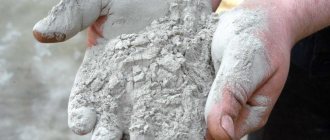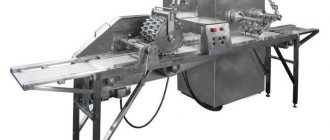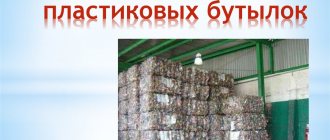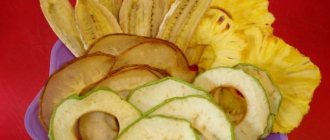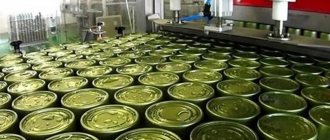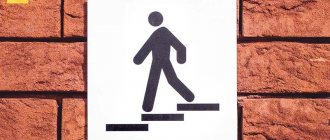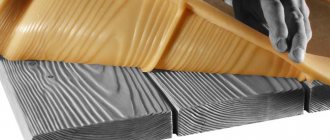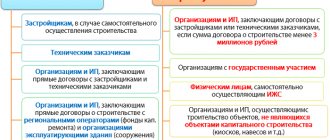General description of the material
Foam concrete
Foam concrete is concrete that has a cellular structure. These properties are achieved by the presence of closed air bubbles in the thickness of the material. Therefore, foam concrete blocks have low density and thermal conductivity.
They are very often used both as thermal insulation materials (grades D200-D500), and structural and thermal insulation materials (grades D600-D800) or structural (D900-D1600).
Foam concrete is especially often used in low-rise construction or in the construction of interior partitions. It is very well processed and can be trimmed to suit the required building parameters. Foam concrete blocks are manufactured in accordance with standard dimensions - usually 200x300x600 mm or 100x300x600 mm.
When using foam blocks in private construction, you can get the following:
- low cost of material;
- excellent thermophysical characteristics;
- ease of processing and installation;
- light weight of the blocks, which does not create additional load on other structures;
- environmental friendliness of the material.
The disadvantages of foam concrete include its low strength, ability to absorb moisture from the environment, and significant shrinkage.
The difference between foam blocks and gas blocks
Most often, a foam block is compared with its closest analogue from the category of cellular concrete - a gas block. The key difference is the method of generating bubbles: in aerated concrete they are formed due to the release of hydrogen from the reaction between calcium hydroxide added to the solution and a suspension of aluminum powder. As a result, aerated concrete takes on the light, almost white color of sand-lime brick, while foam concrete remains gray.
In addition, fans of different materials often argue about what is best to use in construction - brick, foam concrete or wood. The characteristics of foam blocks show that they are clearly not on the list of outsiders:
- The material usually has a density of 600–800 kg/m³, which is comparable to wood. Aerated concrete has the same density, and brick is three times heavier.
- Foam concrete retains heat 3.5–4 times better than sand-lime brick and only 20% worse than wood. Walls made from it save heating costs by 25–35%.
- Water absorption by a foam block does not exceed 8–12% of its weight. For ordinary bricks this figure reaches 14–16%, and for foam concrete - 25%.
- Foam concrete, like ceramic brick, can easily withstand temperatures up to 500°C, which is critical for wood.
- The material is considered no less environmentally friendly than wood. Its natural radiation background is five times less than that of a brick.
- Foam blocks are available for customers on a limited budget. A cubic meter of foam concrete sells for 3,000 rubles, bricks for 6,000 rubles, and boards for 4,500 rubles.
Features of foam block production
In order for the profit from the production of foam blocks to be high, this issue should be taken seriously. First of all, you need to choose a method of manufacturing the material - classic or autoclave. In the first case, it is necessary to prepare a regular cement mortar, into which air is supplied using a foam generator. After thorough mixing, the mixture enters the prepared molds, where it reaches its design strength.
When using the autoclave method, all components of foam concrete are mixed under significant pressure. The finished solution is fed into the molds through a nozzle.
There is also another technology for producing this material - mixing dry components with subsequent mineralization. It is quite complex, so it is mainly used in mass production.
Final stage of production
To obtain the correct forms without serious deviations, it is recommended to buy forms produced in a factory. Or they are made independently, using metal sheets or plywood.
But if it is plywood, it is necessary to additionally use polyethylene. Another option for obtaining foam concrete blocks of the required shape is to use formwork.
But in such cases, the process of dividing the foam into formwork into equal parts is necessary. This process must be performed while the mixture has not yet completely hardened.
There is no need to rush and use ready-made foam concrete blocks right away, because it will take about 15 hours before they are finally formed.
Necessary equipment
Necessary equipment for the production of foam blocks at home:
- concrete mixer. You can also use a special installation for the production of cellular concrete. It involves a complex unit, which includes a pressure mixer, an adapter for a sleeve through which the prepared solution is poured into molds;
- compressor. This installation is necessary for supplying compressed air to other units - a steam generator device, a mixer for supplying the finished solution;
- steam generator. This unit produces a special fine-pored foam, which consists of water, air and a special foaming agent;
- form. This equipment for the production of foam concrete can be made independently from plywood, chipboard or regular edged boards.
Foam generator for foam concrete
Advantages and sales area
The reason for the great popularity of foam block is its advantages:
- It is suitable for creating many buildings.
- Low cost.
- High dynamics of construction of walls and structures. The reason lies in the parameters of the material (this is about 4 bricks).
- High strength. Although it is not recommended to build houses with more than 3 floors.
- Excellent sound and heat insulation.
- Excellent resistance to frost.
- Price of a mini plant for the production of foam blocks.
When implementing the plan to produce this material in the home environment, it is very important to identify the further scope of sales of your products. The faster the product is sold, the faster the production costs will pay off. The most popular options for selling the material are:
- construction companies or markets,
- shops of the same profile,
- wholesale buyers (a special agreement is required).
attract clients using different advertising techniques:
- banners on busy roads and other public places,
- advertisements in print media and on the Internet,
- direct communication with specialists from construction organizations.
Another factor that should be given considerable attention when developing your business is seasonality. The greatest demand for this material is observed in spring. This is exactly what is optimal for the project. However, the price of machines for foam blocks has been rising since February.
How much do you need to invest to start a business?
If you plan to start producing foam concrete blocks only for your own needs, you can get by with less powerful equipment. In this case, you can buy a regular concrete mixer, the average cost of which is 3,000 rubles. It is also necessary to additionally purchase a foam generator with a compressor for 20 thousand rubles. If you plan to set up a business producing foam blocks, it is more advisable to buy a ready-made set of equipment and molds. In this case, you can use not only new units, but also used ones (in good condition).
Ready-made foam concrete installations are very easy to use. They occupy a small area - about 2.5-5 square meters. m depending on power and standard equipment. This complex also includes a grid for loading bulk materials, a vacuum gauge, a rotary pump, a water meter, hoses, and a control cabinet. For a home business, the PBU-300 model would be ideal, the average price of which is 130 thousand rubles.
Installation of PBU-300
It has the following characteristics:
- working volume is 300 l;
- productivity – 0.9 cubic meters. m/hour;
- power – 2.2 kW;
- weight – 0.38 t;
- dimensions – 1.7x1.5x0.85 m.
Equipment for the production of foam concrete - selection factors:
- consultation
. It is important that they not only sell you the installation, but also explain in detail the specifics of its operation and the nuances of its maintenance (maintenance);
- documentation
. The presence of a technical passport, instructions, warranty and any accompanying documentation indicates the reliability of the supplier;
- salesman
. If possible, it is better to purchase equipment directly from the manufacturer;
- connection
. It is advisable that the installation and commissioning of the equipment be carried out by the supplier;
- education
. The basics of use, production technology and care must accompany the equipment during the period of its use;
- service
. Keeping equipment in working condition is an important aspect that affects the profitability of production. Therefore, when purchasing an installation, you need to ask who, where and under what conditions performs equipment maintenance.
What to do with forms?
You can make molds for foam blocks yourself, but it is very difficult. It is very important to monitor the accuracy of all parameters so that the resulting material has ideal dimensions. Therefore, for a home business, it is best to find used molds. Their cost will depend on the capacity and material from which they are made. On the building materials and equipment market you can find approximately the following prices:
- steel molds (36 pieces), where the cell size is 600x300x200 mm - 32 thousand rubles;
- steel molds (22 pieces), where the cell size is 600x300x200 mm - 10 thousand rubles;
- plywood molds (22 pieces), where the cell size is 588x300x188 mm - 6 thousand rubles;
- one plastic mold measuring 390x190x288 mm - 250 rubles.
Forms for foam blocks
Main risks
There is a dependence on the season. During the winter, construction work is suspended. Risks are reduced through contracts with wholesale buyers.
Failure to comply with the technology can have very serious consequences. It is very important to control the quality of raw materials, monitor the production process and constantly work on introducing new technologies. This will allow you to survive in the market and not lose to competitors.
Cost of manufactured foam concrete blocks
For example, to build a house you need 20 cubic meters. m of foam concrete blocks. To produce them, you need to buy a concrete mixer, a foam generator and plywood molds. In general, you need to spend about 29 thousand rubles on the purchase of all equipment.
Cost of 1 cubic meter m of blocks is determined by all the necessary costs for their production :
- materials – cement, sand, foaming agent. To get 1 cu. m of finished products you need to spend 720 rubles;
- electricity – 11.25 rubles;
- equipment costs - 29,000/20 = 1,450 rubles.
It turns out that the cost of production is 1 cubic meter. m of foam blocks are 2181 rubles. The final cost of the material can be reduced by purchasing all materials in large quantities at a wholesale price and renting out the equipment after construction is completed.
Business registration
Even a small home production of foam blocks should be registered if the entrepreneur plans to sell the products to neighbors and friends. In most cases, an individual entrepreneur is sufficient, but for fulfilling government and corporate orders, an LLC seems preferable. When submitting an application, you must select the following codes:
OKVED for foam block production
| 23.61 | Production of concrete products for use in construction |
| 23.61.1 | Production of finished building products from cement and concrete |
Of all the preferential taxation systems, only the simplified taxation system is available to an entrepreneur. Its variety will help you choose a business plan for the production of foam blocks: if the expected profitability exceeds 67%, you should switch to a rate of 6%, otherwise it is more reasonable to indicate a rate of 15% in the application for registration of individual entrepreneurs.
Before starting activities, it is necessary to undergo inspections and obtain permits from Rospotrebnadzor and the Fire Service. To sell finished products, it is useful to obtain a quality certificate: formally, its presence is not mandatory, but buyers are attracted by proof that the foam blocks comply with GOST requirements.
Certification is carried out by specialized laboratories and centers that are accredited by Rostest. The cost of the service depends on what needs to be done:
- If an entrepreneur wants to certify a complete production, he must submit a detailed design of the production line, information about the quality control system and a process organization diagram.
- Only batches of products can be certified. To do this, you need documents for all raw materials used. Trusted suppliers of sand, concrete and chemicals are always ready to send such evidence of quality to the client.
- In both the first and second cases, the laboratory tests the product for compliance with the standards of strength, safety, heat transfer and water absorption. If necessary, check the density and frost resistance of products.
Professional equipment
When selecting equipment for the production of foam blocks, you should pay attention to mobile mini-factories or stationary conveyor lines.
Mini-factory
The first type of device includes a concrete mixer with an adapter, a compressor, a steam generator, a working platform and a dispenser. When using such a mini-plant, the finished solution is manually distributed into molds, and after setting, it is removed from them and sent to an autoclave. After final drying, the blocks are completely ready for use. This equipment is delivered to the site as an integral complex. It is easy to install and does not require commissioning.
As a result of the production of blocks using mobile mini-factories, material of average quality is obtained. Also, the disadvantages of this equipment include the significant consumption of foaming agents. To obtain a product with optimal characteristics, you need to carefully approach the formulation of the blocks. If you select the necessary components incorrectly, the material will turn out to be of poor quality.
Stationary conveyor lines differ from previous equipment in their high power. It is capable of working around the clock, providing a capacity of 5-12 cubic meters. m/hour.
Aerated concrete production line
Typically, such conveyor lines are equipped with the following units:
- a mixing complex, which is additionally equipped with a pneumatic seal and a pump;
- foam generator with compressor;
- water dispenser, which is equipped with an automatic control system;
- dispenser for binding materials;
- conveyors for sand and cement;
- Remote Control;
- vibrating sieve
Considering all the features of the production process for the production of foam concrete blocks on both a small and large scale, it is clear that this is a very profitable business. This material is popular in the market, so there will always be demand for it among buyers.
Types and specifications of this material
Foam block is an excellent alternative to traditional brick. It has gained enormous fame due to its ease of production, availability of components for its manufacture and excellent qualities. The material is based on the following components: cement, sand, special foam and certain additives. The production process is carried out without heat treatment. This makes the technology much easier.
Production of foam blocks
Types of this material according to the hardening method:
- Autoclave. Very high pressure is required for hardening.
- Non-autoclave. Natural conditions are required for hardening.
Types of material according to strength:
- Thermal insulation. Its degree of density is modest. This type is based on foam concrete D400 and D500. Purpose of application: thermal insulation.
- Structural. It is characterized by high strength. The purpose of application is to create load-bearing walls.
- A combination of the first two types. This type is based on foam concrete at least D600, D700 and higher. Purposes of use: creating internal partitions.
When setting up this business, you need to decide on the types and parameters of the planned material. Its width and thickness are determined by the area of its use. Thickness has a key effect on the strength of the block. And density seriously affects its mass. For example, the designation D600 indicates that the mass of one cubic meter. m of such material is 600 kg. And the thickness parameter has a direct dependence on the cost.
Production of foam blocks
Two types of foam concrete installations
Foam concrete has 2 main components: foam and concrete. I succeeded in two types of installations for foam concrete.
Conventional - separate foam generator, separate mixer
The majority of such installations. In them, the foam is prepared separately and added to the mixer with cement.
Its components:
- concrete mixer (not ordinary, but special)
- foam generator
- compressor
The operating principle is as follows. Mix the concrete separately. Separate foam generator. Add the finished foam to the mixer. We close it, build up pressure, the foam concrete flows through the hose.
One of the manufacturers of such installations is spetsgriffon.rf
Cavitation installations
Consists of a cavitation unit and a concrete screw pump.
In such an installation, the stirrer is a vertical “barrel”. In it, at the bottom, like in a kitchen mixer, the blades rotate at a very high speed. Pour all the components into it. Including foaming agent and fiber.
All this rotates at wild speed and this causes bubbles to form in the concrete. We pour the foam concrete into a tub from which the pump delivers it to the hose.
As a result, such concrete turns out to be of higher quality and more homogeneous. And fiber increases its strength.
Such installations are manufactured by Sarmat-Tornado LLC. https://www.sarmat-tornado.ru/
What problems await beginning foam concrete workers?
- The filler is usually sand, which needs to be selected. It needs a vibrating sieve. Sarmat-Tornado has them, but the price is 100 thousand rubles. - a serious investment for a self-builder. The quality of concrete depends on this.
- Here is another series of plugs that slip in the rollers: the density of the concrete, the density of the foam, the concrete is dense at the bottom, the cap is less dense at the top, when fed to a height of several meters, due to the concrete’s own weight, its density changes. In general, there are a lot of problems that you will only find out about when you try to make foam concrete yourself.
